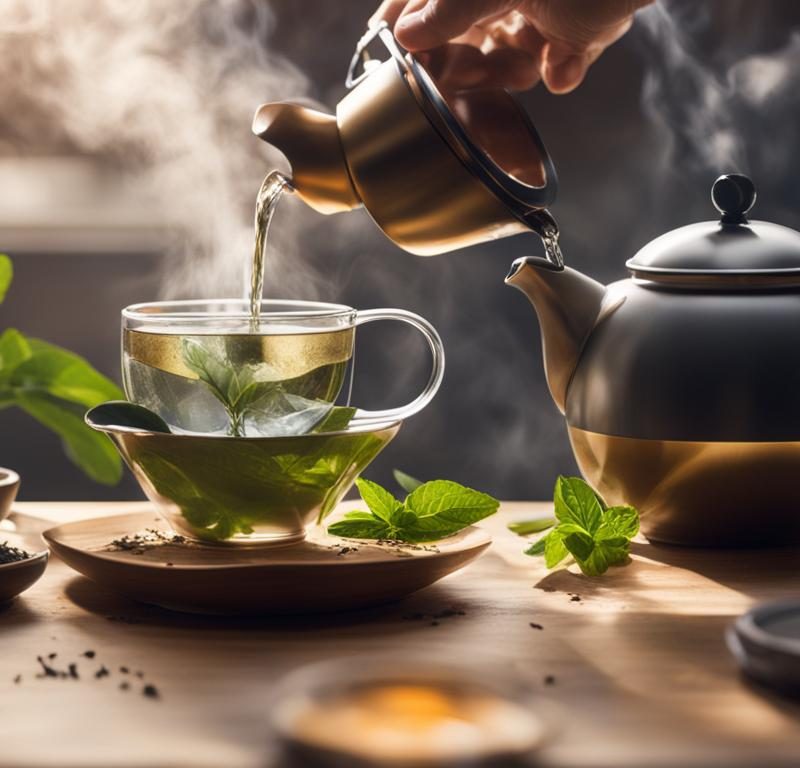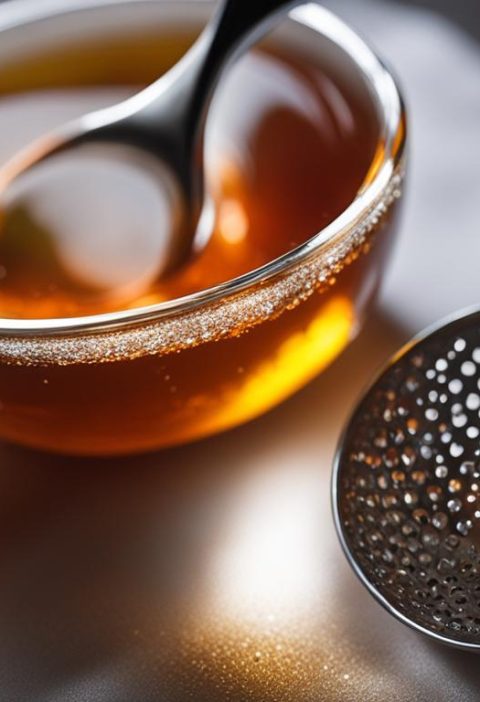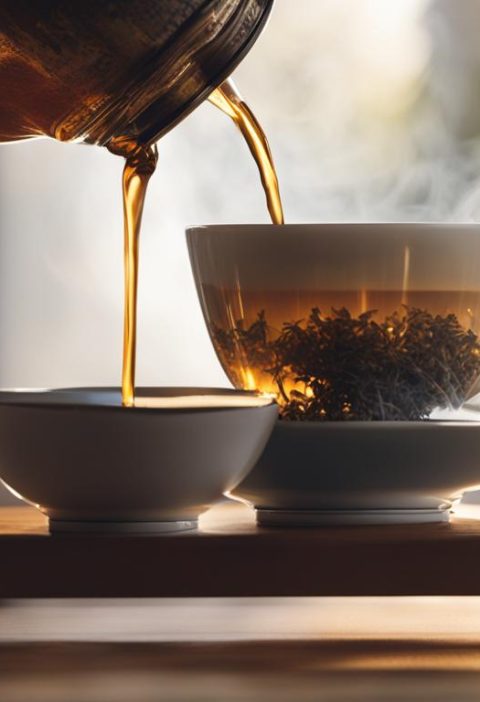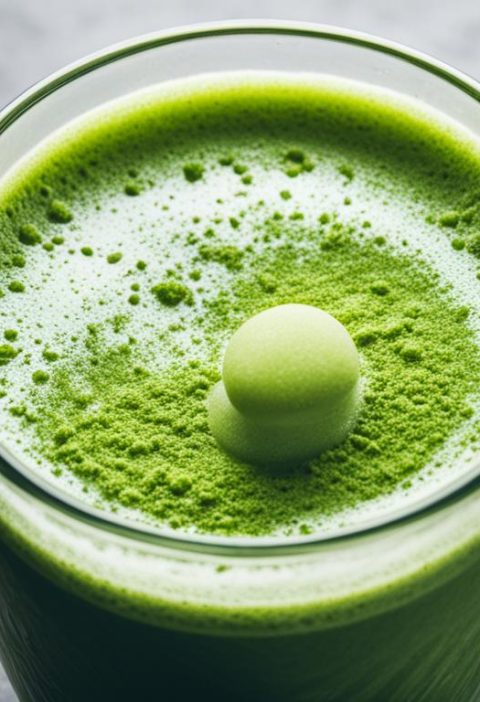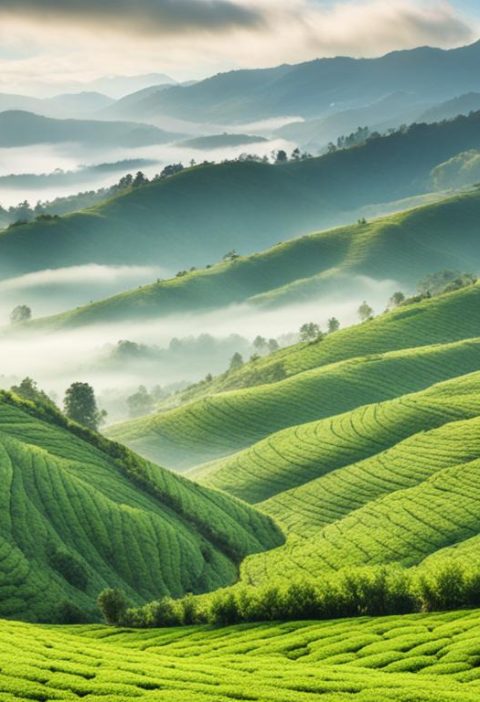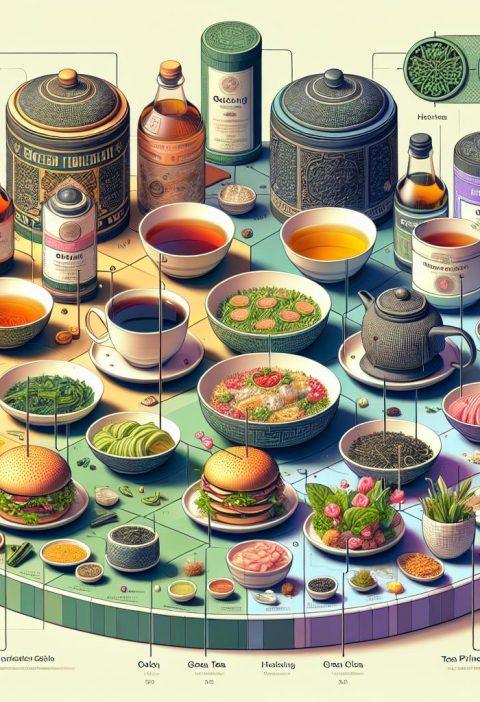A delicious cup of tea can be the perfect way to warm up, recharge, or relax. But to truly elevate your tea experience, it’s important to craft the perfect tea steeping routine. This article will provide you with expert tips on optimal brewing times and methods, ensuring that every cup of tea you enjoy is absolutely perfect.
Understanding Tea Types and Steeping Techniques
Not all teas are the same, and understanding the different types of tea and their steeping techniques is crucial. True teas, such as black, green, oolong, and white tea, come from the Camellia sinensis plant and require specific steeping methods based on their oxidation levels. On the other hand, herbal teas, also known as tisanes, are made from various herbs and plants and have different steeping requirements. By knowing the differences between these tea types and how to steep them properly, you can enhance the flavor and enjoyment of every cup.
Key Takeaways:
- There are different types of teas, including true teas (black, green, oolong, white) and herbal teas. Each type requires specific steeping techniques.
- True teas come from the Camellia sinensis plant and have different oxidation levels that determine their flavor and steeping requirements.
- Herbal teas are made from various herbs and plants and may have different steeping times and temperatures.
Fresh Ingredients and Proper Storage
The quality of your tea starts with fresh ingredients and proper storage. If you’re using fresh ingredients for herbal tea, it’s best to use them shortly after they’re cut or purchased. Dried tea leaves have a long shelf life when stored properly, but their flavor and aroma can degrade over time. It’s also important to consider the quality of your water, as tap water high in minerals or treated with chlorine can affect the flavor of your tea. By using fresh ingredients and storing your tea correctly, you can ensure the best flavor and quality in every cup.
Key Takeaways:
- Use fresh ingredients for herbal tea and consume them shortly after cutting or purchasing.
- Store dried tea leaves in airtight containers away from heat, light, and moisture to maintain their flavor and aroma.
- Choose high-quality water for brewing tea, as tap water with high mineral content or chlorine can affect the taste.
Understanding Tea Types and Steeping Techniques
Not all teas are the same, and it’s important to understand the different types of tea and their steeping techniques. By knowing the differences between these tea types and how to steep them properly, you can enhance the flavor and enjoyment of every cup.
True Teas
True teas, such as black, green, oolong, and white tea, come from the Camellia sinensis plant and require specific steeping methods based on their oxidation levels.
- Black Tea: Black tea is fully oxidized and has a robust flavor. It is best steeped in boiling water for 3-5 minutes.
- Green Tea: Green tea is unoxidized and has a fresh, vegetal taste. It should be steeped in water below boiling point (around 170°F) for 2-3 minutes.
- Oolong Tea: Oolong tea is partially oxidized and has a range of flavors from floral to fruity. It requires water temperature around 195°F and a steeping time of 4-7 minutes.
- White Tea: White tea is the least processed and has a delicate flavor. To extract its subtle notes, steep it in water below boiling point (around 175°F) for 3-5 minutes.
Herbal Teas
Herbal teas, also known as tisanes, are made from various herbs and plants and have different steeping requirements. Here are some popular herbal teas and their steeping techniques:
- Chamomile Tea: Chamomile tea has a calming effect and is often steeped in boiling water for 5-7 minutes to release its soothing properties.
- Peppermint Tea: Peppermint tea has a refreshing flavor and is best steeped in boiling water for 3-5 minutes to bring out its minty notes.
- Hibiscus Tea: Hibiscus tea is known for its vibrant color and tart taste. Steep it in boiling water for 5-8 minutes to extract its tangy flavors.
- Rooibos Tea: Rooibos tea has a naturally sweet flavor and is steeped in boiling water for 5-7 minutes to develop its rich taste.
To further understand the different types of tea and their steeping techniques, refer to the table below:
| Tea Type | Steeping Time | Water Temperature |
|---|---|---|
| Black Tea | 3-5 minutes | Boiling (212°F) |
| Green Tea | 2-3 minutes | 170-180°F |
| Oolong Tea | 4-7 minutes | 195-205°F |
| White Tea | 3-5 minutes | 165-175°F |
| Chamomile Tea | 5-7 minutes | Boiling (212°F) |
| Peppermint Tea | 3-5 minutes | Boiling (212°F) |
| Hibiscus Tea | 5-8 minutes | Boiling (212°F) |
| Rooibos Tea | 5-7 minutes | Boiling (212°F) |
Fresh Ingredients and Proper Storage
The quality of your tea starts with fresh ingredients and proper storage. Using fresh ingredients for herbal tea ensures a vibrant and flavorful brew. When using fresh herbs, it’s best to use them shortly after they’re cut or purchased, as they have the most potent flavors and aromas.
When it comes to dried tea leaves, proper storage is essential to maintain their quality and freshness. Exposure to air, light, and moisture can degrade the flavor and aroma of the tea over time. To keep your tea tasting its best, store it in an airtight container away from direct sunlight and strong odors.
Table: Tips for Proper Tea Storage
| Storage Method | Recommendation |
|---|---|
| Airtight Container | Store tea in airtight containers to prevent exposure to air, which can oxidize the tea leaves. |
| Away from Sunlight | Avoid storing tea in direct sunlight, as UV rays can degrade its quality. |
| Cool and Dark Place | Choose a storage location that is cool, dark, and dry to preserve the flavors and aromas of the tea. |
The quality of water you use for brewing tea is also crucial. Tap water with high mineral content or treated with chlorine can adversely affect the flavor of the tea. Ideally, use filtered or spring water for the best results. Good-quality water ensures that the flavors and nuances of the tea shine through without any interference.
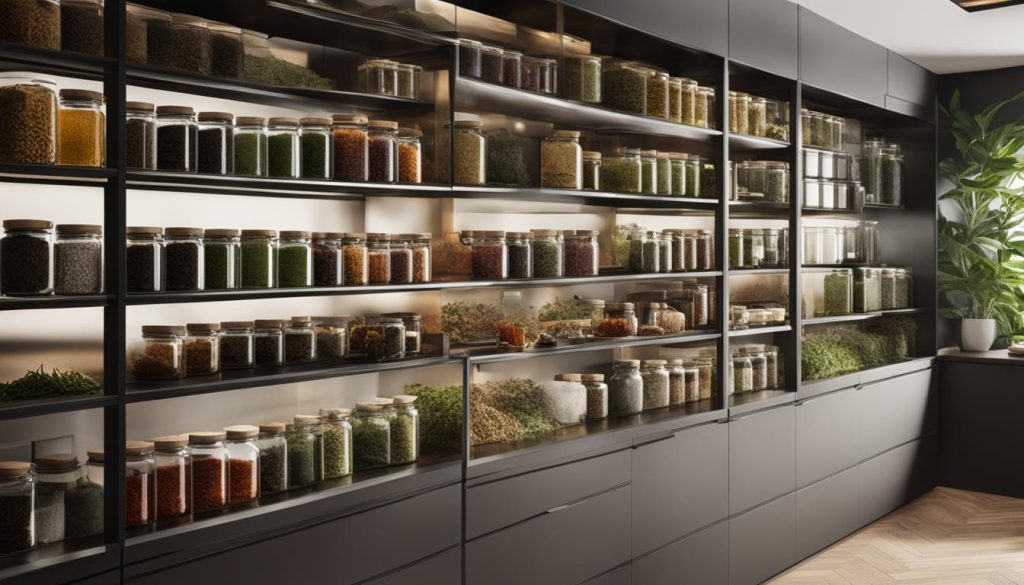
Time and Temperature Tips
The key to a perfect cup of tea lies in the right steeping time and water temperature. While it may vary depending on the type of tea, it’s important to find the right balance. Steeping tea for too long can result in a bitter taste, while steeping for too short a time may not extract enough flavors and antioxidants. Additionally, the water temperature affects the extraction process and the caffeine content of the tea. By following the recommended steeping times and water temperatures, you can enjoy the best flavor and experience in every cup.
The Importance of Tea Steeping Time
Each type of tea has its own optimal steeping time, which allows the flavors to fully develop without becoming overpowering. Here are some general guidelines:
| Tea Type | Steeping Time |
|---|---|
| Black Tea | 3-5 minutes |
| Green Tea | 2-4 minutes |
| Oolong Tea | 3-5 minutes |
| White Tea | 4-6 minutes |
| Herbal Tea | 5-7 minutes |
Getting the Water Temperature Right
The water temperature used for steeping tea also plays a crucial role in the final flavor. Different tea varieties require specific water temperatures to bring out their best qualities. Here’s a simple guide:
- Black Tea: Use water that has just come to a rolling boil (212°F or 100°C).
- Green Tea: Heat the water until it reaches around 175°F (80°C) for a delicate flavor.
- Oolong Tea: Aim for water around 195°F (90°C) to fully extract its complex flavors.
- White Tea: Use water that’s heated to around 175°F (80°C) for a gentle infusion.
- Herbal Tea: Bring the water to a rolling boil (212°F or 100°C) for a robust herbal infusion.
Remember, these are general recommendations, and you can adjust the steeping time and water temperature to suit your personal taste preferences.
Hot Steeping Technique
Hot steeping is a popular method for brewing tea quickly and efficiently while preserving its rich flavors. To achieve the perfect cup of tea, it’s essential to follow appropriate steeping guidelines, including the best steeping time and temperature for different tea types.
Here are some general steeping guidelines for common tea varieties:
| Tea Type | Best Steeping Time | Best Steeping Temperature |
|---|---|---|
| White Tea | 4-5 minutes | 175°F |
| Black Tea | 3-4 minutes | 195°F |
| Green Tea | 2-3 minutes | 175°F |
| Oolong Tea | 3-5 minutes | 195-205°F |
By adhering to these steeping guidelines, you can ensure that your hot steeped tea is perfectly brewed and delivers the full spectrum of flavors and aromas.
Cold Steeping Technique
When it comes to enjoying iced tea, cold steeping is a fantastic alternative to hot steeping. This method results in a smoother and less bitter tea, with the added benefit of higher antioxidant content. While it does require a longer steeping time of up to 12 hours, the flavor and benefits that cold steeping provides are definitely worth the wait.
However, if you’re looking for a quicker alternative, there’s a method that will give you a satisfying iced tea experience in just a few minutes. Start by steeping your tea for 3-5 minutes at a temperature of 175°F (79°C). Once the steeping time is complete, simply add ice to chill the tea and enjoy a refreshing and aromatic iced tea experience. This quick cold steeping technique allows for maximum flavor extraction and ensures that you reap the benefits of antioxidants.
Cold steeping is not only a convenient way to prepare iced tea, but it also offers a unique flavor profile compared to traditional hot steeping. The slower steeping process allows for a more delicate extraction of flavors, resulting in a subtly sweet and nuanced taste. The lower temperature used in cold steeping also helps to retain the natural sweetness and aroma of the tea leaves, making it a delightful choice for those who prefer a milder and less astringent tea.
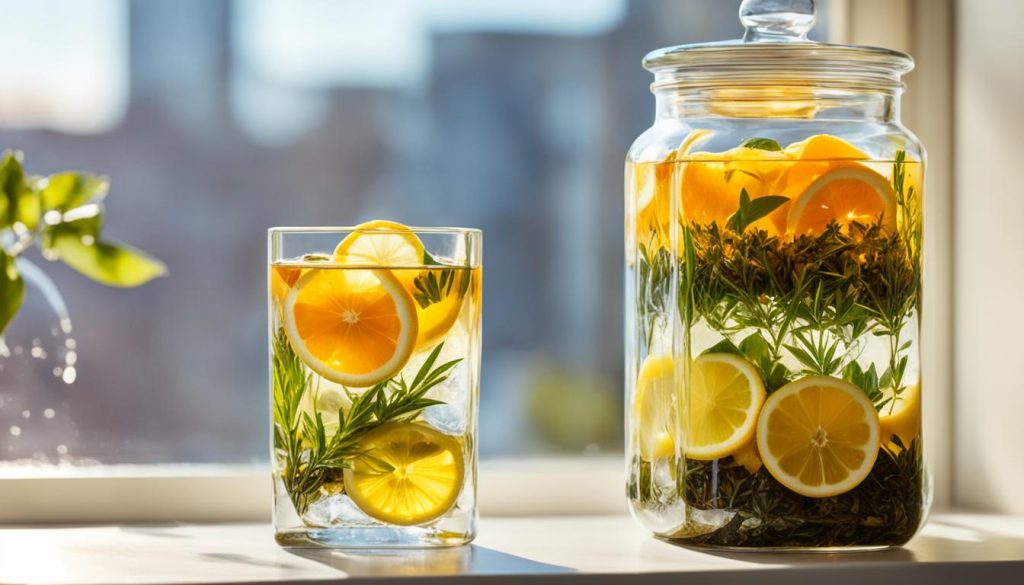
Whether you’re enjoying a leisurely afternoon on a hot summer day or simply prefer the smooth and less bitter flavor of iced tea, cold steeping is a wonderful option to explore. By taking advantage of this technique, you can elevate your tea experience and indulge in the refreshing goodness of a perfectly steeped iced tea. So why not give cold steeping a try and savor the delightful flavors that await?
Tools, Techniques, and Tips for Steeping
While there are specialized tools available for steeping tea, you don’t necessarily need them to create the perfect cup. Basic tools that you likely already have in your kitchen can do the job just fine. A teacup, a tea bag, and a kettle are all you need to get started on your tea journey.
However, if you prefer to use loose leaf tea, you’ll need a metal tea ball or infuser to hold the leaves. This allows the tea leaves to expand and fully infuse the water, resulting in a more flavorful and aromatic cup. With loose leaf tea, you have the flexibility to experiment with different amounts and combinations to suit your taste.
It’s important to measure the right amount of tea for a well-balanced flavor. Using too much tea can result in a strong and bitter brew, while using too little may result in a weak and insipid cup. Experiment with different measurements to find the perfect ratio for your taste preferences.
Additionally, steeping time plays a crucial role in the flavor profile of your tea. Each type of tea has its own recommended steeping time, which is the optimal duration for extracting the desired flavors and characteristics. Pay attention to these recommended times to achieve the best results.
Brewing loose leaf tea offers a wide variety of flavors and the option to re-infuse the leaves for multiple cups. This allows you to experience different layers of flavors and get the most out of your tea leaves. Explore the world of loose leaf teas and discover the nuanced flavors they have to offer.
Steeping Tips:
- Use basic tools like a teacup, a tea bag, and a kettle for steeping.
- If using loose leaf tea, invest in a metal tea ball or infuser to hold the leaves.
- Measure the right amount of tea to achieve a balanced flavor.
- Follow the recommended steeping time for each type of tea to extract the optimal flavors.
- Explore the world of loose leaf teas for a wider variety of flavors and the option to re-infuse the leaves.
Tea Steeping Tools and Techniques
| Tea Steeping Tool | Description |
|---|---|
| Tea Cup | A cup specifically designed for drinking tea, often made of porcelain or ceramic. |
| Tea Bag | A small, porous bag or sachet containing tea leaves or herbs, used for steeping convenience. |
| Kettle | A vessel used for heating water to the appropriate temperature for steeping tea. |
| Metal Tea Ball or Infuser | A ball or mesh container used to hold loose leaf tea during steeping, allowing for easy removal. |
The Benefits of Tea and Choosing the Right Variety
Tea is not only a delightful beverage but also offers a multitude of health benefits. Its abundant antioxidant and polyphenol content make it a powerful ally in promoting overall well-being.
True teas, derived from the Camellia sinensis plant, are particularly rich in beneficial compounds such as catechins and theaflavins. These antioxidants have been linked to a reduced risk of diseases like cancer and heart disease.
One variety of true tea that stands out for its health benefits is green tea. Green tea contains a specific type of antioxidant called EGCG, which has been shown to reduce inflammation and improve mental alertness.
When choosing the right tea variety for your health goals, it’s important to consider the caffeine levels. Black teas, for example, have the highest caffeine content, while herbal teas are naturally caffeine-free.
Here’s a breakdown of the different types of teas and their health benefits:
| Tea Type | Health Benefits |
|---|---|
| Green Tea | Reduced inflammation, improved mental alertness |
| Black Tea | Boosted energy, improved focus |
| Oolong Tea | Weight management, improved digestion |
| White Tea | Antimicrobial properties, youthful skin |
| Herbal Tea | Improved digestion, enhanced relaxation |
By selecting the right tea variety based on your health needs, you can enjoy not only the delicious flavors but also the positive effects it can have on your overall well-being.
Developing Your Perfect Tea Time Routine
Creating a perfect tea time routine is all about finding what works best for you throughout the day. Start your morning with a cup of invigorating black tea to kickstart your day with a burst of energy and focus. The robust flavor and caffeine in black tea make it an excellent choice to jumpstart your morning routine.
In the afternoon, indulge in the delicate nuances of oolong or green tea for a refreshing midday pick-me-up. These teas offer a balanced combination of flavor and gentle stimulation, helping you stay alert and focused without the jitters that coffee can sometimes bring. Remember to take a moment to pause, sip, and savor the flavors as you recharge for the rest of the day.
As the day winds down, transition to the softer, milder flavors of white tea in the early evening. White tea offers a gentle, caffeine-free option that can be enjoyed without disrupting your sleep routine. Its delicate flavors and aroma create a soothing experience, helping you unwind and relax after a long day.
Finally, before bedtime, savor a cup of herbal tea specially crafted to promote relaxation and sleep. Chamomile, lavender, and valerian root are popular choices known for their calming properties. Allow the soothing warmth and aromas to envelop you as you prepare for a restful night’s sleep.
By developing your own tea time routine, you can enhance your tea-drinking experience and make it a cherished part of your daily life. Whether it’s morning tea, afternoon tea, evening tea, or bedtime tea, let each cup be a moment of mindfulness, self-care, and enjoyment.
